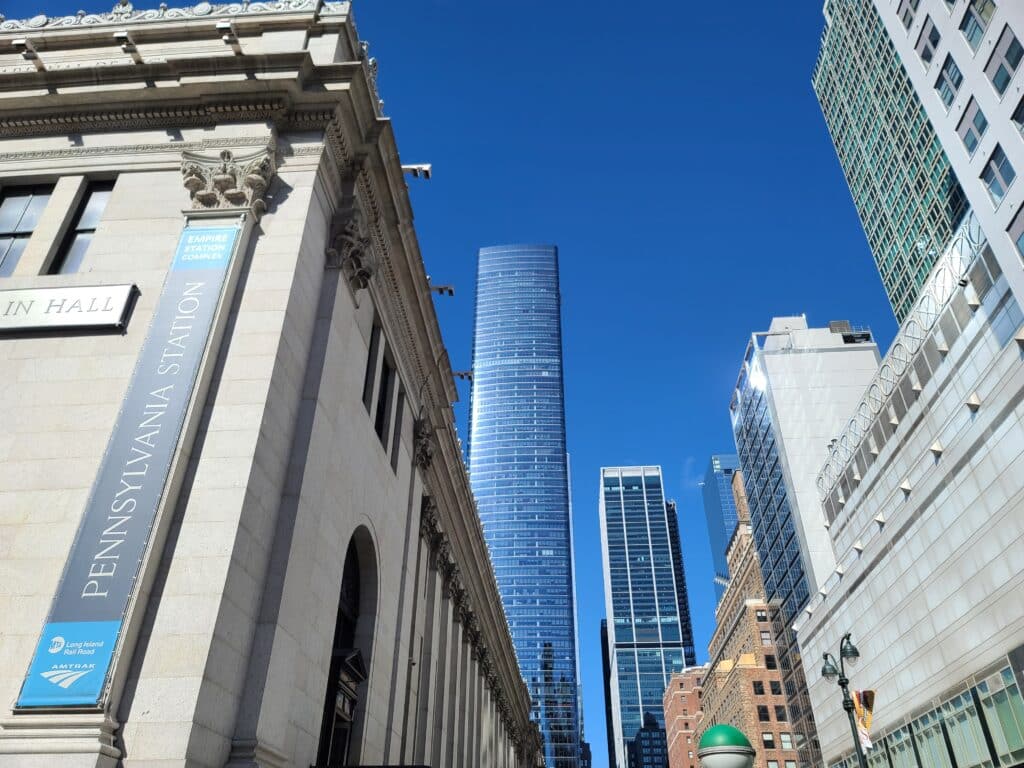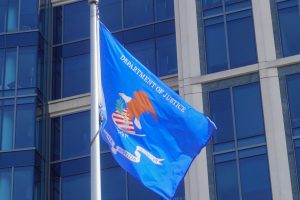There has been more movement from the Supreme Court on gun policy. Just a few weeks after agreeing to take up a new Second Amendment case, the High Court is considering whether to issue a stay in, or even take up, the fight over President Joe Biden’s “ghost gun” ban. Contributing Writer Jake Fogleman examines what direction they’re likely to go in.
New York may well be on its way back up to the Court too. As I explain in my piece, officials in the state keep doing things that are likely to provoke the Court. This time, the NYPD has been caught slow walking gun permits.
Plus, Reason Magazine’s JD Tuccille joins the podcast to talk about a study showing some Americans won’t tell researchers they own guns. And I talk a bit about being back on the farm this weekend!

Analysis: What Will SCOTUS Do With Biden’s ‘Ghost Gun’ Rule? [Member Exclusive]
By Jake Fogleman
The Department of Justice has just launched a Hail Mary request for the Supreme Court to step in and reinstate the Biden administration’s “ghost gun” ban. It’s not yet clear how the Justices will respond.
On Thursday, the Biden administration asked the Supreme Court to stay a Texas federal judge’s nationwide order vacating the ATF’s rule on unfinished frames and receivers in VanDerStok v. Garland. That order was narrowed slightly but left in place this week by the Fifth Circuit Court of Appeals while it prepares to hear the case on its merits.
“The district court’s universal vacatur is irreparably harming the public and the government by reopening the floodgates to the tide of untraceable ghost guns flowing into our Nation’s communities,” Solicitor General Elizabeth Prelogar (D.) wrote in her SCOTUS stay application. “This Court should stay the district court’s vacatur in full. A stay would prevent further irreparable harm to the public while allowing the litigation in this case and other challenges to the Rule to proceed in the ordinary course.”
The emergency stay application was enough to get the Justices’ attention, prompting Justice Samuel Alito on Friday to issue a temporary administrative stay on the district court’s ruling for one week. He also requested the parties to the case to submit briefs before the temporary stay expires. With such immediate action, it’s worth examining the possible outcomes for a significant portion of the President’s gun-control agenda.
The justice overseeing emergency appeals out of the Fifth Circuit is Samuel Alito, whose jurisprudence has favored gun-rights plaintiffs in each Second Amendment case to come before the Court during his tenure. He also happens to be one of the more prominent skeptics of administrative power on the current Court, which is what the legal fate of the ATF’s rule hinges on. One might think then that the outcome of the DOJ’s emergency appeal will be as simple as Justice Alito single-handedly swatting down the Biden administration’s request to allow its executive order to be enforced. But there’s reason to think it won’t be so simple or satisfying for gun rights advocates.
Though a Justice overseeing a given Circuit may individually grant or deny an application for relief, recent experience with emergency motions in gun cases has shown the Court appears to rely on input from all of the Justices when deciding. Justice Sotomayor referred both emergency requests for intervention in the lawsuits against New York’s concealed carry law to the full Court, for instance, as did Justice Barrett with the request to intervene in the battle over Illinois’ ban on so-called assault weapons. In both cases, the full Court declined to intervene, preferring instead to allow the Second and Seventh Circuit Courts of Appeals to proceed with the lawsuits in due course.
Justice Alito even opined on the first request for the Supreme Court to intervene on New York’s law before the Second Circuit makes a decision, emphasizing the deference the Court gives to lower courts’ jurisdictions and procedures.
“I understand the Court’s denial today to reflect respect for the Second Circuit’s procedures in managing its own docket, rather than expressing any view on the merits of the case,” Alito wrote in Antonyuk v. Nigrelli.
Alito and the rest of the Justices may exercise the same degree of restraint in deciding what to do with this latest emergency application.
On the other hand, the party that filed the appeal in this case is unlike those in the previous cases. Rather than gun rights plaintiffs seeking relief, the U.S. Government is asking the Supreme Court to step in this time. The Court often gives DOJ and other federal entities more deference when they request intervention.
The first Second Amendment cert grant to happen post-Bruen—on domestic violence restraining orders and gun prohibition, in United States v. Rahimi—resulted from a DOJ cert petition. Plus, the issuance of a temporary stay is already more deference than was shown to the gun-rights plaintiffs in either the New York or Illinois emergency applications. That factor could tip the balance toward the Justices preferring to give the Biden administration more leeway in exercising its authority while the case plays out in the Fifth Circuit.
At the same time, however, there is a crucial difference between the ghost gun rule and Rahimi that might be dispositive. Unlike the ATF frame and receiver rule, the law struck down by the Fifth Circuit in Rahimi was the result of an Act of Congress passed several decades ago. A ruling striking down an established law creates more potential chaos and uncertainty for the criminal justice system. Rahimi also allows the Court to refine its newly crafted Bruen test for Second Amendment cases.
The VanDerStock case, on the other hand, merely vacated an administrative regulation that had only been on the books for less than a full year. In other words, as the Fifth Circuit put it when it declined to issue a stay on the order vacating the rule, refusing to intervene at this early stage “effectively maintains, pending appeal, the status quo that existed for 54 years from 1968 to 2022.”
Finally, there’s one last possible way the emergency application could go, which the Solicitor General hinted at in her brief: a full-on cert grant to hear the case as part of the Court’s 2023 term.
“Given the gravity and urgency of the public safety issues at stake, if the Court is not prepared to grant a stay, it may wish to construe this application as a petition for a writ of certiorari before judgment, grant the petition, and set this case for argument this fall,” Prelogar wrote.
This is perhaps the least likely outcome considering it would involve circumventing the federal appeals courts before they have had a chance to arrive at a judgment. While not unheard of, it would be an extraordinary step for such a recently-enacted rule governing a relatively niche segment of American gun policy.
Whichever way the Supreme Court decides to go in handling DOJ’s emergency application, it will be significant in marking the first time the Court has formally weighed in on one of President Biden’s signature gun-control regulations.
Podcast: Reason Magazine’s JD Tuccille on Study Showing Some Americans Don’t Tell Pollsters They Own Guns [Member Early Access]
By Stephen Gutowski
This week, we’re looking at a recent study that found a substantial number of gun owners may be unwilling to tell pollsters they own guns.
To help illuminate some of the significant implications of the research, we have Reason Magazine’s JD Tuccille joining us. He did a great piece on the study over at Reason and had several important insights.
For one, he said the study may undercut almost everything we think we know about guns in America. After all, it raised the possibility that as many as half of the people who told the researchers they didn’t own a firearm really did. If that’s the case, our view of gun ownership has been far too limited.
Tuccille also explained some major reasons gun owners may not want to tell researchers about their firearms. And there are several. Everything from concerns over the government getting ahold of the information to distrusting the motivations of academics at liberal universities.
Plus, Contributing Writer Jake Fogleman and I discuss the NYPD withholding gun permits even after the Supreme Court’s latest Second Amendment ruling. And I talk about how the National Journalism Center’s range day went (hint: pretty great).
You can listen to the episode on your favorite podcasting app or by clicking here. Video of the show is available on our YouTube channel. Reload Members get access on Sunday, as always. Everyone else will be able to listen on Monday.
Back on the Farm
I’m back up in Pennsylvania this weekend watching the farm. It has been a bit of a scorcher. But things have cooled down a bit as the days have progressed.
The horses have been a delight to deal with. Even the chickens are behaving themselves. The barn cat has been lounging around as she’s wont to do.
We went out to Lancaster too. Shady Maple is truly a wonder of the Amish world. Of course, I ate too much. But what can you do? It was worth it.
I’m hoping to get some range time in with my sister before we head home. She’s thinking of getting a concealed carry permit. So, I’d like to get to the range with her soon than later.
Anyway, things are good. I’ll leave you with one last shot from everyone’s favorite barn cat.

Analysis: New York Officials’ Actions Keep Tempting Supreme Court Intervention [Member Exclusive]
By Stephen Gutowski
Lawmakers and law enforcement officials in New York continue to push the Second Amendment’s limits as outlined just last year in a case they lost at the Supreme Court.
This week, we found out the NYPD’s reaction to SCOTUS striking down the state’s restrictive concealed carry permitting regime for being too selective was to issue fewer permits and at an even lower approval rate than before. In 2021, a new report from a local publication called The City shows, officials approved 2,591 of 4,663 gun ownership or carry permit applications–or 56 percent. In 2022, that number fell to 1,550, or 21 percent, of the 7,260 applications it received.
The numbers from the six months after the Supreme Court’s ruling in New York State Rifle and Pistol Association v. Bruen were even worse than the overall average for 2022. Applications for that period more than doubled from just over 2,000 to just under 5,000 as demand for gun permits rose in the wake of the ruling. However, the city only approved 503, or just over 10 percent, of those applications. And the change is unlikely to be caused by a surge in people applying who don’t qualify for a permit because the NYPD has only denied 16 of those applicants. They are simply sitting on the rest of them.
This is not a positive development for New Yorkers who wish to legally arm themselves. But it’s also bad news for the NYPD’s permitting division, which is likely susceptible to a civil-rights challenge, and the state’s new restrictive concealed carry law, which has already garnered skepticism from key members of the High Court as a potential attempt to disregard Bruen.
This is especially true if the NYPD is intentionally slow-walking the gun permits. That’s what attorney Peter Tilem, who is representing gun owners in a class-action lawsuit related to the delays, said is probably going on.
“‘Holy shoot, what do we do now?’” he told The City, imagining discussions between NYPD officials. “Let’s not decide anything and let’s figure out what our options are.’”
After all, it did take the city a few weeks just to come up with a replacement for the law SCOTUS struck down. And the law has been enjoined several times since it was enacted in the fall of 2022. So, there were significant periods of time when the strictest parts of the state’s permitting process weren’t applicable, and the NYPD should have been issuing permits.
But they weren’t.
That’s a bad look for the department and the state alike. After all, New York is already facing down several, to-this-point-successful, challenges to its Bruen-response law. The state has done very little to disguise its end goal.
When asked by reporters where permit holders would be able to legally carry under the state’s broad expansion of gun-free “sensitive places,” Governor Kathy Hochul (D.) responded, “Probably some streets.”
That’s despite the Supreme Court explicitly noting in Bruen that, while some places can be kept off-limits for gun carry, they are limited.
“Put simply, there is no historical basis for New York to effectively declare the island of Manhattan a ‘sensitive place’ simply because it is crowded and protected generally by the New York City Police Department,” the majority wrote.
The NYPD seems to be doing just as little to disguise its attempt to avoid issuing gun permits to law-abiding residents. And that’s despite a warning from Justices Bret Kavanaugh and John Roberts that, while objective permitting requirements are likely constitutional, any requirements designed to prevent responsible citizens from obtaining permits are not allowed.
“As petitioners acknowledge, shall-issue licensing regimes are constitutionally permissible, subject of course to an as-applied challenge if a shall-issue licensing regime does not operate in that manner in practice,” Kavanaugh wrote.
The lack of permits in the state’s largest city will probably lend credence to the challenges already lodged against the state’s law. And those challenges were going very well even before this new information came out. Federal district judge Glenn Suddaby issued a temporary restraining order against most of the law’s controversial provisions back in October.
“Simply stated, instead of moving toward becoming a shall-issue jurisdiction, New York State has further entrenched itself as a shall-not-issue jurisdiction,” Suddaby wrote. “And, by doing so, it has further reduced a first-class constitutional right to bear arms in public for self-defense (which, during the 19th and 18th centuries in America, generally came with an assumption that law-abiding responsible citizens were not a danger to themselves or others unless there was specific ground for a contrary finding) into a mere request (which is burdened with a presumption of dangerousness and the need to show ‘good moral character’).”
Several other judges have done the same for individual aspects of it too. The state has appealed to the Second Circuit, which has stayed the lower court’s rulings. Its law remains in effect for now, even after a plea to the Supreme Court for intervention was denied in January.
But that doesn’t mean things will stay that way for long. The case has been put on an accelerated schedule. And Justice Samuel Alito, joined by Justice Clarence Thomas, went out of his way to note that the Supreme Court declined to intervene out of respect for the Second Circuit’s process and not because it agreed with New York on the case’s merits.
“The New York law at issue in this application presents novel and serious questions under both the First and the Second Amendments,” Alito wrote in Antonyuk v. Nigrelli. “The District Court found, in a thorough opinion, that the applicants were likely to succeed on a number of their claims, and it issued a preliminary injunction as to twelve provisions of the challenged law.”
They even encouraged plaintiffs in the case to come back to them if the Second Circuit took too long with its decision.
“Applicants should not be deterred by today’s order from again seeking relief if the Second Circuit does not, within a reasonable time, provide an explanation for its stay order or expedite consideration of the appeal,” Alito wrote.
Now, again, New York officials have given the Court another potential reason to get involved sooner than later. It has only been a year since SCOTUS knocked down New York’s strict gun laws. But the state’s officials have put themselves on the fast track for a second showdown with little reason to think the outcome would be any different this time around.
That’s it for now.
I’ll talk to you all again soon.
Thanks,
Stephen Gutowski
Founder
The Reload










